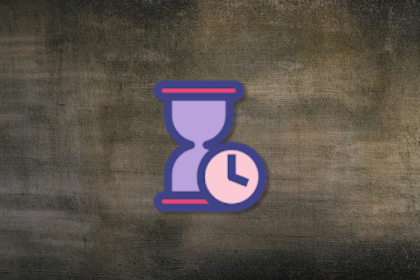Each year, thousands of startups emerge, hoping to create better alternatives to existing products. Yet, around 90 percent of these startups won’t survive longer than five years.

Why does this happen?
Many factors contribute to a startup’s demise. While there isn’t a single reason for it, a poor product development strategy almost guarantees failure.
Before diving into the topic, we should clarify what a product strategy isn’t.
A product development strategy is not:
These points are distractions from creating a real product development strategy. Now, let’s focus on what a product development strategy is.
A product development strategy is a comprehensive plan that guides a company in creating, testing, and marketing new products or improving existing ones. It encompasses the entire process, from initial ideation to product launch and beyond, and helps the product team understand the target audience, competition, and market conditions. The product development strategy aims to ensure that the company delivers value to its customers while achieving growth and success in the marketplace.
Creating a solid product development strategy involves identifying product opportunities, defining clear goals, and outlining the steps and resources needed to bring the product to life. A well-executed strategy ensures that the company aligns its efforts with its overall business objectives, reduces risks associated with product development, and maximizes the chances of a successful product launch.
To grasp this concept, let’s use soccer as an analogy.
In 2009, Barcelona had one of the best teams in history. Guardiola introduced the Tiki-Taka strategy, and they were almost unbeatable with Messi, Xavi, and Iniesta leading the team. They controlled the game and had an average of 65 percent ball possession.
During the Champions League quarter-finals, Bayern Munich faced Barcelona. Everyone knew Barcelona was the favorite, but Louis Van Gaal (Bayern’s coach) thought he had a winning strategy.
Van Gaal decided to apply high pressure on Barcelona, aiming to keep them on the defensive and reduce their ball possession. Despite skepticism from Bayern’s players, Van Gaal stuck with his plan. The result? Barcelona won 4-0.
What happened? Choosing a misfitting strategy led to defeat. Note that I said “misfitting,” not “bad.” This strategy may have worked in another game, but not against Barcelona in 2009.
Now, let’s consider a similar situation in the context of software product management. Imagine a software company that has developed an innovative, user-friendly email client. The company’s main competitor is a well-established player in the market with a strong user base and a reputation for providing both advanced features and robust security measures.
In an attempt to capture market share, the company decides to focus solely on developing more advanced features to compete directly with the market leader, believing this will win over users. However, this strategy doesn’t take into account the company’s unique selling proposition: its user-friendly interface.
As a result, the email client becomes increasingly complex and less intuitive, alienating its original target audience. The product development strategy of focusing solely on advanced features has led to a product that no longer differentiates itself from the competition, resulting in disappointing sales and limited market penetration.
Just as in the soccer example, a misfitting product development strategy leads to suboptimal results. These examples underscore the importance of selecting a strategy that aligns with your product’s unique strengths and the needs of your target audience.
The game of business has various strategies, and you should understand before you start playing.
Below are some common product development strategies employed by product-led organizations around the world:
There are many other types of strategies, but covering all of them in a single article isn’t feasible. To learn from other companies, I recommend reading The Invincible Company by Alexander Osterwalder, one of the most insightful books on the topic.
A good product development strategy focuses on understanding customers and creating value for them.
Now let’s get our hands dirty and walk through how to actually execute a product development strategy from start to finish.
The following steps apply not only to new products but also to evolving existing ones.
Think of product development strategy like a road trip. Along the way, you’ll encounter gas stations, restaurants, hotels, parking lots, radars, tolls, and more. As the driver, you decide what you need and make decisions based on the trip’s current situation. The same goes for product strategy — you’re the driver.
Keep in mind that these six steps aren’t a waterfall approach. They represent the elements you need for success, but the order and frequency with which you visit them will vary according to your current challenges, needs, and goals.
Without further ado, here’s an example of what a sound product development strategy looks like:
Explore the market to identify opportunities for creating products. This can be done using various methods, such as interviews, market research, search trends, and customer feedback.
The goal is to find something that is desirable to customers, business-viable, and technologically feasible. Define the market you want to penetrate, then understand its size, mechanics, style (innovative, conservative), available options, and current satisfaction level.
Analyze the competition to understand their strategy, market share, pricing model, target audience, and weaknesses. This information will help you evaluate how to differentiate your product.
Diverge before converging; use “how might we” questions to explore the problem space and imagine potential solutions. Employ techniques such as the crazy eights method to generate ideas, then narrow them down to test with the market.
Once you understand the problem you want to focus on, the value to deliver, and the business value to collect, you’re ready to define the product scope.
Be sure to identify a specific audience, problem, and value proposition. I recommend using a lean canvas to keep everyone on the same page and maintain simplicity.
After completing the previous steps, you need to align on the next steps. Create a product roadmap to provide direction to teams while empowering them to make daily decisions.
A good roadmap ensures teams know what to prioritize. Use a roadmapping tool like ProductBoard, Asana, or Jira to make your roadmap transparent for everyone.
Recognize that most ideas will fail, so test your assumptions and explore as many solutions as possible before development.
There are numerous experiments available to help you accelerate learning, such as the Wizard of Oz, concierge, 404, painted doors, A/B tests, and prototypes. Effective experiments help you weed out poor ideas.
Building your product isn’t a static process that you delegate to your product teams. This step is dynamic, and you will likely repeat ideation, experimentation, and development several times before getting it right.
Start by making small investments and testing the results with a portion of your audience. Inspect and adapt as often as necessary. Your goal is to create a product users want and will benefit from. Frameworks such as Kanban and scrum can work well once you’ve done your homework correctly.
Define your go-to-market approach and execute it. A good rule of thumb is to start small, learn from real customers, and grow gradually.
Aim high, but begin with small steps. Avoid making a full-blown launch; the longer you take to launch, the higher the risks. Select a specific audience, focus on it, and then gradually expand to a larger audience.
Lacking a product development strategy ensures failure. Having a bad product development strategy ensures failure. Setting the product development strategy in stone ensures failure.
There are many ways to get the strategy wrong and only a few ways to get it right. Stay vigilant to changes around you and adapt your steps accordingly. Failing to do so could be fatal to your business.
Your product development strategy should establish constraints to concentrate on what you believe will lead to success. As you learn, you will realize that some things aren’t as you initially thought. Step back, inspect and adapt, rinse, and repeat.
Manage your expectations. Don’t change your product development strategy every other day. The strategy evolves slowly. You may make minor tweaks every quarter and conduct a significant review yearly.
Keep it simple. Set the product development strategy, make progress, learn, adapt, and excel in the product world.
Featured image source: IconScout
LogRocket identifies friction points in the user experience so you can make informed decisions about product and design changes that must happen to hit your goals.
With LogRocket, you can understand the scope of the issues affecting your product and prioritize the changes that need to be made. LogRocket simplifies workflows by allowing Engineering, Product, UX, and Design teams to work from the same data as you, eliminating any confusion about what needs to be done.
Get your teams on the same page — try LogRocket today.

Thach Nguyen, Senior Director of Product Management — STEPS at Stewart Title, emphasizes candid moments and human error in the age of AI.

Guard your focus, not just your time. Learn tactics to protect attention, cut noise, and do deep work that actually moves the roadmap.

Rumana Hafesjee talks about the evolving role of the product executive in today’s “great hesitation,” explores reinventing yourself as a leader, the benefits of fractional leadership, and more.

Trey Courtney talks about his process for evaluating partnerships or acquisitions and how he successfully implements these initiatives.